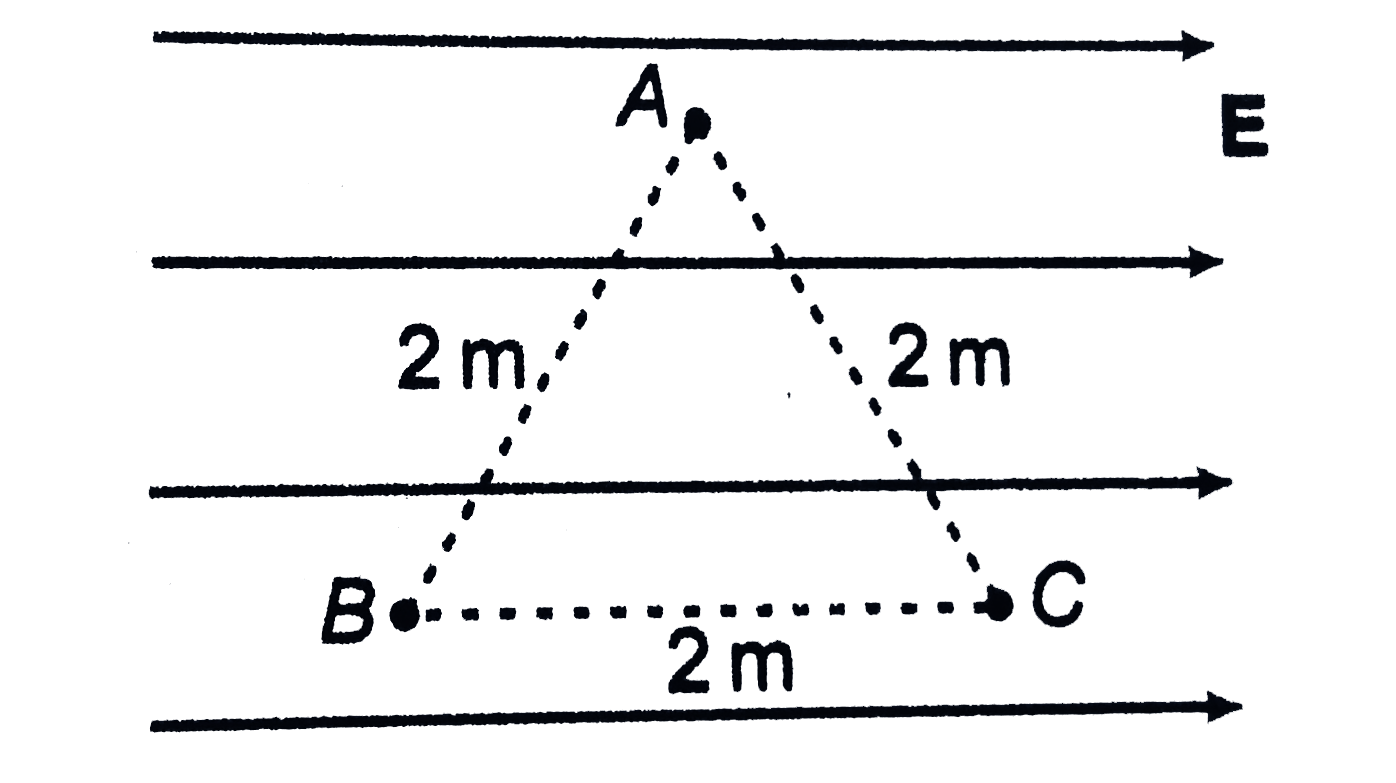In Region of Electric field Given by →E=(Ax−B)ˆI. Where A=20 unit and B=10 unit. If Electric potential at x=1m is v1 and at x=−5m is v2. Then v1−v2 is equal to
150V
170V
140V
180V
The correct Answer is:D
To find the difference in electric potential V1−V2 given the electric field →E=(Ax−B)^i, where A=20 units and B=10 units, we can follow these steps:
Step 1: Understand the relationship between electric field and electric potential
The relationship between electric field →E and electric potential V is given by:
→E=−dVdx
This means that the change in electric potential can be found by integrating the electric field.
Step 2: Set up the integral
We can express the change in potential V1−V2 as:
V1−V2=−∫x1x2→E⋅d→x
In this case, x1=1m and x2=−5m.
Step 3: Substitute the electric field into the integral
Substituting →E=(20x−10)^i into the integral:
V1−V2=−∫1−5(20x−10)dx
Step 4: Perform the integration
Now we can compute the integral:
∫(20x−10)dx=10x2−10x
Now we evaluate this from x=−5 to x=1:
V1−V2=−((10(1)2−10(1))−(10(−5)2−10(−5)))
Step 5: Calculate the values
Calculating the first part:
10(1)2−10(1)=10−10=0
Calculating the second part:
10(−5)2−10(−5)=10(25)+50=250+50=300
Now substituting back into the equation:
V1−V2=−(0−300)=300V
Step 6: Final result
Thus, the difference in electric potential is:
V1−V2=300V
The relationship between electric field →E and electric potential V is given by:
→E=−dVdx
This means that the change in electric potential can be found by integrating the electric field.
We can express the change in potential V1−V2 as:
V1−V2=−∫x1x2→E⋅d→x
In this case, x1=1m and x2=−5m.
Substituting →E=(20x−10)^i into the integral:
V1−V2=−∫1−5(20x−10)dx
Now we can compute the integral:
∫(20x−10)dx=10x2−10x
Now we evaluate this from x=−5 to x=1:
V1−V2=−((10(1)2−10(1))−(10(−5)2−10(−5)))
Calculating the first part:
10(1)2−10(1)=10−10=0
Calculating the second part:
10(−5)2−10(−5)=10(25)+50=250+50=300
Now substituting back into the equation:
V1−V2=−(0−300)=300V
Thus, the difference in electric potential is:
V1−V2=300V
Topper's Solved these Questions
Similar Questions
The electric field in a region is given by →E=(Ax+B)ˆi Where E is in NC− and x is in metres. The values of constants are A=20SI Unit and B==10SI unit. If the potential at x=1 is V1 and that at x=−5 is V2 then V1−V2 is:
View SolutionElectrostatic field in a region is given by , vecE= (yzhati + zxhatj + xyhatk)V/m , where x,y and z are in m. If electric potential at origin is zero, then potential at (1m,1m, 1m) is
View SolutionAn electric field →E=Bxˆi exists in space, where B=20V/m2. Taking the potential at (2m, 4m) to be zero, find the potential at the origin.
View SolutionAn electric field →E=→IAx exists in the space, where A=10Vm−2. Take the potential at (10m, 20m ) to be zero. Find the potential at the origin.
View SolutionIn the given circuit find the |VA−VB| where VA,VB are electric potentials at the points A and B.

View SolutionFind the potential V of an electrostatic field →E=a(yˆi+xˆj), where a is a constant.
View SolutionIn any region, if electric field is define as ¯¯¯E=(ˆi+2ˆj+ˆk)V/m , then the potential differnece between two points A(0,0,0) and B(2,3,4) in that region is
View SolutionMagnitude of electric field only on the x-coordinate as →E=20x2ˆiV/m. Find
(i) The potential difference between two points A (5m, 0) and B (10m, 0).
(ii) Potential at x=5 if V at ∞ is 10 volt.
View SolutionIn uniform electric field, E=10NC−1 as shown in figure, find
(i) VA−VB
(ii) VB−VC.
View SolutionIn uniform electric field E=10N/C, find

a. VA−VB , b. VB−VC
View Solution
